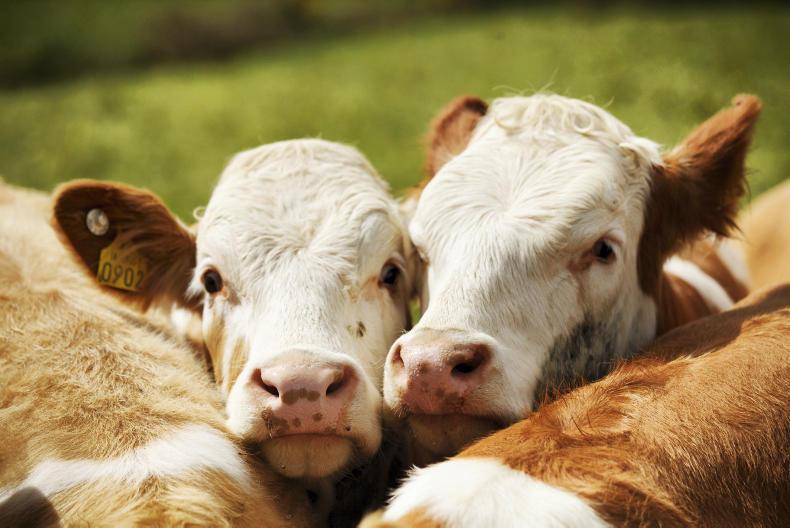Following two years of bull mishaps, our calving end date is almost back to where it was in 2015. The main calving season ended at the weekend and there is now only one cow due at the end of the month.
The average birth weight for the year was 41kg with weight ranging from 26kg (a twin) up to a top of 58kg.
There was a nice steady pace to calving and given the challenging spring I’d be happy to keep the four weeks from mid-March onwards the busiest rather than February.
There were years when half the herd calved in February and when weather didn’t go well it shoved up the work load to unnecessary levels.
For the farm and our current situation I’d be happy to calve the heifers from mid-February and we’ll look to shave off a week or two at the end of calving.
Thankfully, only a handful of calves needed to be helped out getting a drink from the cow and they were all in the last two weeks. It was a case of big calves and cows with big udders. I wouldn’t have the patience to do that with every cow.
The last load of young cows went off to the outfarm for summer at the weekend and the bull was let off with the heifers.
Breeding season snuck up quietly this year. Dad and myself had been talking though different options we could use.
Synchronising
The topic of synchronising the heifers pops up most years. Farm fragmentation and the increased workload required due to the layout of where they graze turn us off the idea.
Looking through the calving stats wouldn’t justify going that route either. Of the 16 heifers that calved down this year, 14 were in the first 17 cows to calf and another was nine days behind these. It took an extra five weeks for the last heifer though but that can be avoided in future by having a short breeding season for them.
Polled genetics
Something we will be implementing, is the use of more polled genetics through AI in the cows. The number of polled calves here this year was small but it’s a route I would like to move towards. Knocking de-budding calves off the list of jobs would be a nice time-saver.
The job has got easier with time but if it didn’t have to be done it would be even better.
While in Ireland there was a heat wave, the coast was shrouded in cold sea mist for most of the bank holiday weekend. There are so many uncontrollable variables in farming but weather is probably the one that you just have to roll with.
Replenishing silage stocks is one of the grass priorities. Fortunately we made a decision last autumn to graze fields that are awkward to get cows and calves to, later than usual. This meant we could plan for an earlier silage cut if weather didn’t work in our favour.
Reducing fodder demand is another way to help. With that in mind, we aim to cull hard on the cows and pull the bull out after a month with the heifers.
Any not in calf at this point will go to the finishing group.
Farmer Writes: joined-up thinking on schemes would go a long way
Farmer Writes: take solace that everyone is having a difficult spring






 This is a subscriber-only article
This is a subscriber-only article










SHARING OPTIONS: